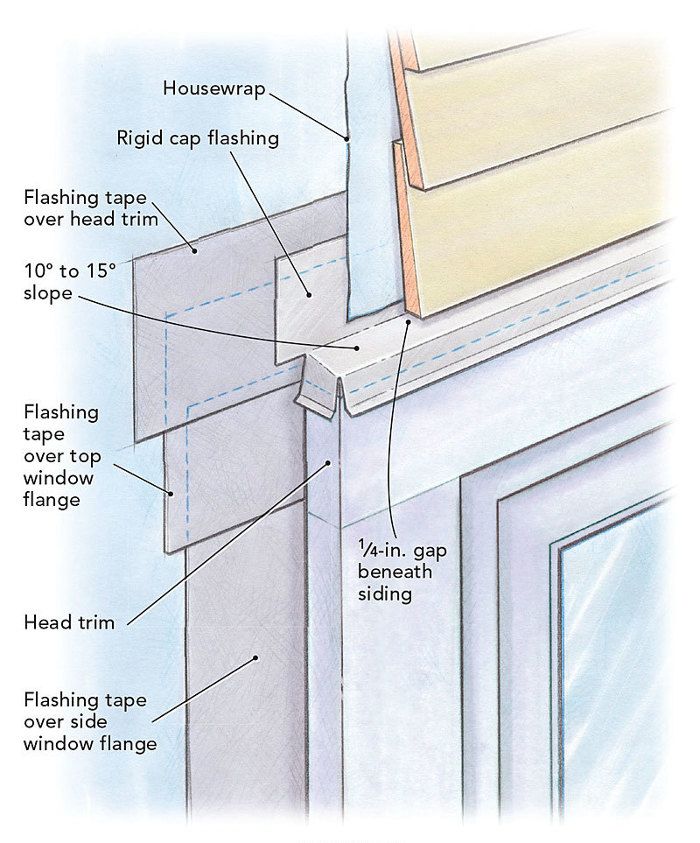
Q:
When installing new windows, I believe it is considered good practice to allow the head flashing above the window trim to overhang a little bit on each side. This leads to an awkward condition, though, where water could pour behind the siding if it’s improperly sealed. Should head flashing have an end dam?
Brian Kuhn, Prairie Village, KS
A:
Editorial adviser Mike Guertin replies: End dams are considered best practice, and some premium prefab cap flashings include end-dam elements. That said, however, I don’t think that they’re absolutely necessary. Cap flashings should have a slope between 10° and 15° so that water will drain off the front of the flashing rather than toward its ends. Before adding a rigid cap flashing, I provide extra protection by applying a strip of flashing tape wide enough to extend at least 3 in. beyond the trim on each side of the window. The tape extends above the point where the head flashing terminates and laps over the top of the head trim. This way, any water that bypasses the cap flashing and gets in on either side of the window will drain against the flashing tape.






















